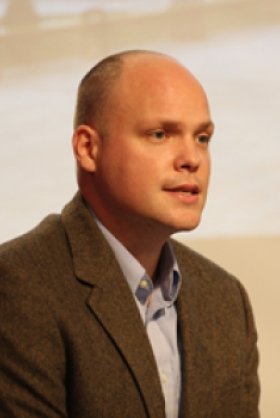Competing Interpretations of Buddhism’s Revival in the Republic of Kalmykia



“What is happening in Kalmykia is less a revival of Buddhism itself than an increase in religious identification made possible by the legal changes of the post-Soviet period, specifically the increased public presence of the religion,” said Edward Holland, Title VIII-Supported Research Scholar, at a June 10, 2013 presentation at the Kennan Institute. Holland discussed the growing influence of Buddhism in the Russian republic of Kalmykia against the backdrop of the larger revival of religion experienced throughout Russia over the last two decades. While religious practice and identification has undoubtedly increased in Kalmykia and throughout Russia, Holland’s interviews with religious elites and focus group conversations reveal that Buddhism’s role in Kalmykia today is more complex.
During the Soviet era, particularly after 1929, the practice of Buddhism in Kalmykia was forcefully repressed and some Buddhist groups were even exiled. While they were rehabilitated in 1957 under Khrushchev, traditional religious practice was not reestablished. Buddhism’s revival in Kalmykia can be traced to the political liberalization of the perestroika period and the Soviet Union’s 1990 law on religious freedom, which led to the construction of the republic’s first Buddhist temple in the early 1990s.
The Russian Federation enshrined freedom of conscience and freedom of worship, proscribed the restriction of rights on religious grounds, and disavowed the endorsement of any one religion as the official religion of the state in its 1993 constitution. In an effort to protect the Russian Orthodox Church, the Russian Duma passed the Law of Freedom of Conscience and Religious Associations in 1997, which made the registration process much more difficult for new, nontraditional religious movements. Buddhism remained protected, however, as it was identified as one of Russia’s four traditional religions in the law’s preamble. As a result, Buddhism’s following and public presence has grown significantly in Kalmykia.
“Buddhism’s presence in Kalmykia is increasingly public,” said Holland. It can be seen in the public use of symbols, monuments, buildings, and billboards. Buddhist symbols have even replaced some Soviet-era markers: Holland remarked that the “Pagoda of the Seven Days” in Kalmykia’s capital, Elista, displaced a once centrally located statue of Lenin, which was moved a few hundred feet away to a more discrete location. Other examples of local state support for Buddhism’s revival include a billboard featuring the Buddhist mantra that celebrated 400 years of Russian-Kalmyk harmony, as well as substantial state funding for the 21 Buddhist temples built in Kalmykia.
Holland stated that while the revival of Buddhism is unquestionable, there are competing interpretations of what this revival actually represents. During an interview he held with Telo Tulku Rinpoche, the head of Kalmykia’s leading religious organization, the Rinpoche suggested that “Buddhism is the spice of being Kalmykian…Buddhism has become a symbol of the Kalmyk nation.” Holland explained that this quote underscores the broad appeal of Buddhism and its wider relevance to Kalmyk society. Yet there are limits to that appeal and relevance, according to a monk at the Golden Temple in Elista, who stressed to Holland that this revived interest in Buddhism remains at a “surface level.”
“The views of religious revival in Kalmykia are complex, and revolve primarily around two competing interpretations,” said Holland. Religious leaders and other experts generally viewed religious knowledge among the Kalmyks as wide but not deep. However, Holland’s survey results found that a high percentage of Kalmyks viewed themselves as Buddhist and as either somewhat or very religious. “Kalmyks almost universally reject the idea that the rise in religious sentiment is a fad, and not reflective of deeper religious feelings,” remarked Holland.
Holland showed an interior photograph of the “Pagoda of the Seven Days” to illustrate these two competing interpretations. “We can see that individuals spinning the prayer wheel have worn down the floor,” Holland described. “This is a popular pastime, to spin the wheel at the pagoda. It doesn’t, however, indicate a deeper engagement with religion.”
A participant in one of his focus groups stated, “I think that the phase of rebirth isn’t as difficult as the phase of development. The phase of development is hard to get started.” “Perhaps this phase of development is where Kalmykia is today,” Holland concluded.
Mackensie Knorr
William Pomeranz, Acting Director, Kennan Institute

The Kennan Institute is the premier US center for advanced research on Eurasia and the oldest and largest regional program at the Woodrow Wilson International Center for Scholars. The Kennan Institute is committed to improving American understanding of Russia, Ukraine, Central Asia, the South Caucasus, and the surrounding region through research and exchange. Read more
